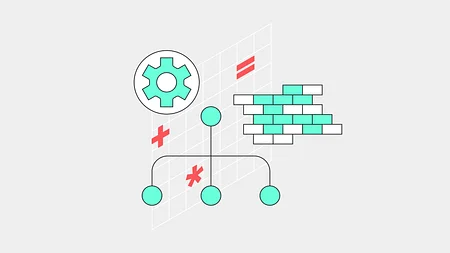How to (properly) scale agile

So you’re looking to scale agile
Agile has become the status quo for most organisations delivering digital services. In recent years, conversation in the enterprise agile community has shifted to scaling agile.
Attempts to successfully instil agile principles on a massive scale have been mixed. In the absence of definitive guidance, a number of companies have turned to frameworks, including SAFe, LeSS and Scrum@Scale. Again, the results are often mixed. This is usually the result of companies using agile and Agile interchangeably, misunderstanding its basic principles and investing money in the wrong place. However, it is important to remember that following an agile scaling framework won’t necessarily fix the problems you’ve been having with your org design.
What exactly is scaling agile?
Scaling means a few things, but in my mind it can be split into three layers:
Layer 1: Let’s get prioritisation, planning and delivery sorted so that multidisciplinary teams are set up for success in complex adaptive markets (XP, Scrum, Kanban, Design Thinking, etc.)
Layer 2: How do we structure and coordinate across large numbers of multidisciplinary teams? (OKRs, SAFe, LeSS, Scrum@Scale and Henrik Kniberg’s work at Spotify)
Layer 3: How do we broaden these principles out into a new holistic model? (Chaordic Organisations, Holacracy, TEAL Organisations)
By the time you get to the second and third layer, you’re starting to seriously challenge the matrix, as outlined in my last piece.
A big consultancy is trying to sell me a textbook SAFe implementation. What should I do?
Based on 10 principles, SAFe is probably the most popular framework for implementing agile principles at scale. Cards on the table; I’m not SAFe’s biggest fan (even in enterprise environments). In practice, SAFe implementations tend to skip a few principles - most notably when it comes to decentralisation, unlocking motivation, and culture. While the framework is a technocratic masterpiece, I think it dilutes the cultural benefits that come from agile transformation by protecting more traditional decision-making. In large conservative organisations, SAFe allows leaders to feel in control as power dynamics remain relatively unchanged. Similarly, SAFe protects most of the pre-existing middle management layer by giving them named roles.
In large conservative organisations, SAFe allows leaders to feel in control as power dynamics remain relatively unchanged.
More radical agile frameworks promote the idea of the organisation as a complex adaptive system, and favour distributing power through additional capacity for self-organisation and self-management. If that sounds too radical, or if you simply mistrust your employees, then SAFe is your friend. You’ll get some of the benefits of transitioning to agile, but without rocking the boat.
Let me be clear - complexity science, self-organising teams and self-management are essential principles for a modern business. The idea that these techniques remain untested outside the lecture theatre is completely false. Visa was founded and structured according to these principles. Half of the district nurses in the Netherlands now work for Buurtzorg, also founded and run according to this model. (Buurtzorg is now rapidly expanding into the US, UK, Sweden and Japan - hardly a mark of failure).
The idea that these techniques remain untested outside the lecture theatre is completely false.
So how do I do agile scaling properly?
The truth is there is no right or wrong way to fix your organisation’s structure. Implementing SAFe is not the quick fix you might have hoped. Each situation is context-dependent. I’d advise engaging the services of someone that can help. I’d avoid anyone that tells you that they have an off-the-shelf solution or quick fix. Organisations are complex and this stuff is hard. You’re going to need to take a test-and-learn approach. The Delivery Tribe at 11:FS contains skilled enterprise agile coaches and organisational design consultants. They’d be happy to collaborate with you on setting up a new operating model for a new proposition, or helping you to iteratively improve what you already have in place.
So if you’re ready to take the next step, get in touch.



